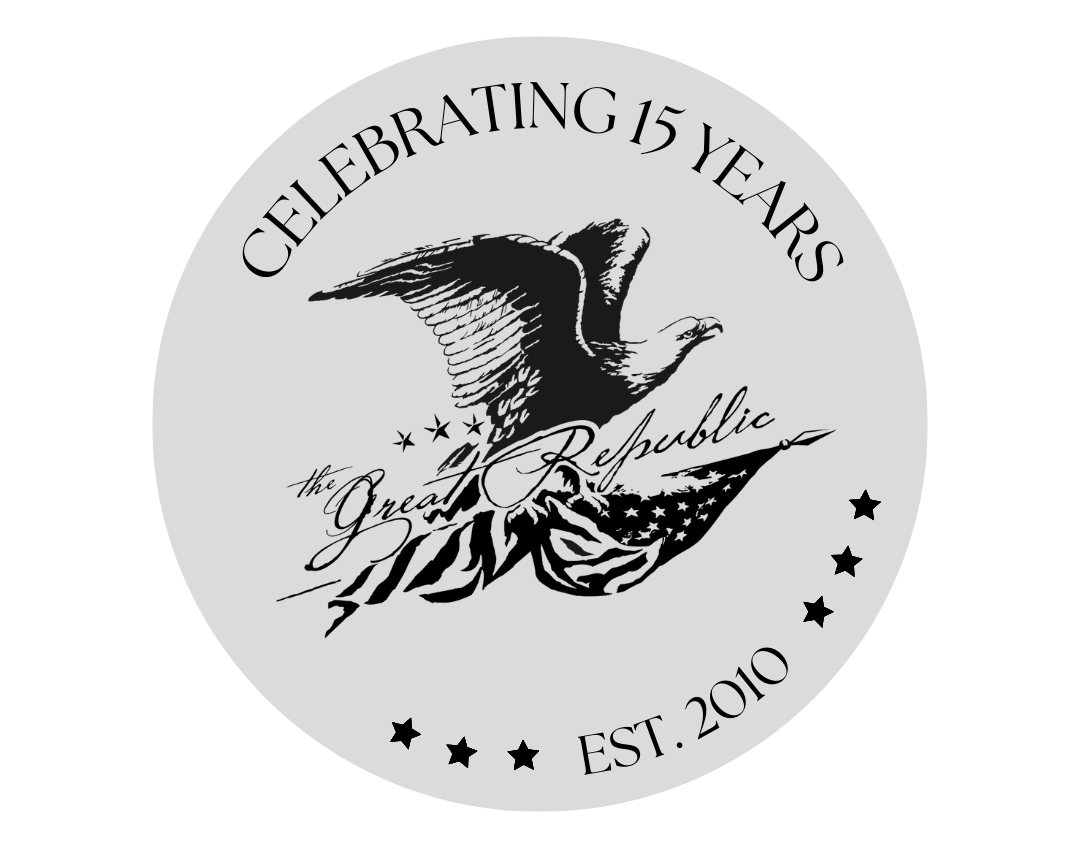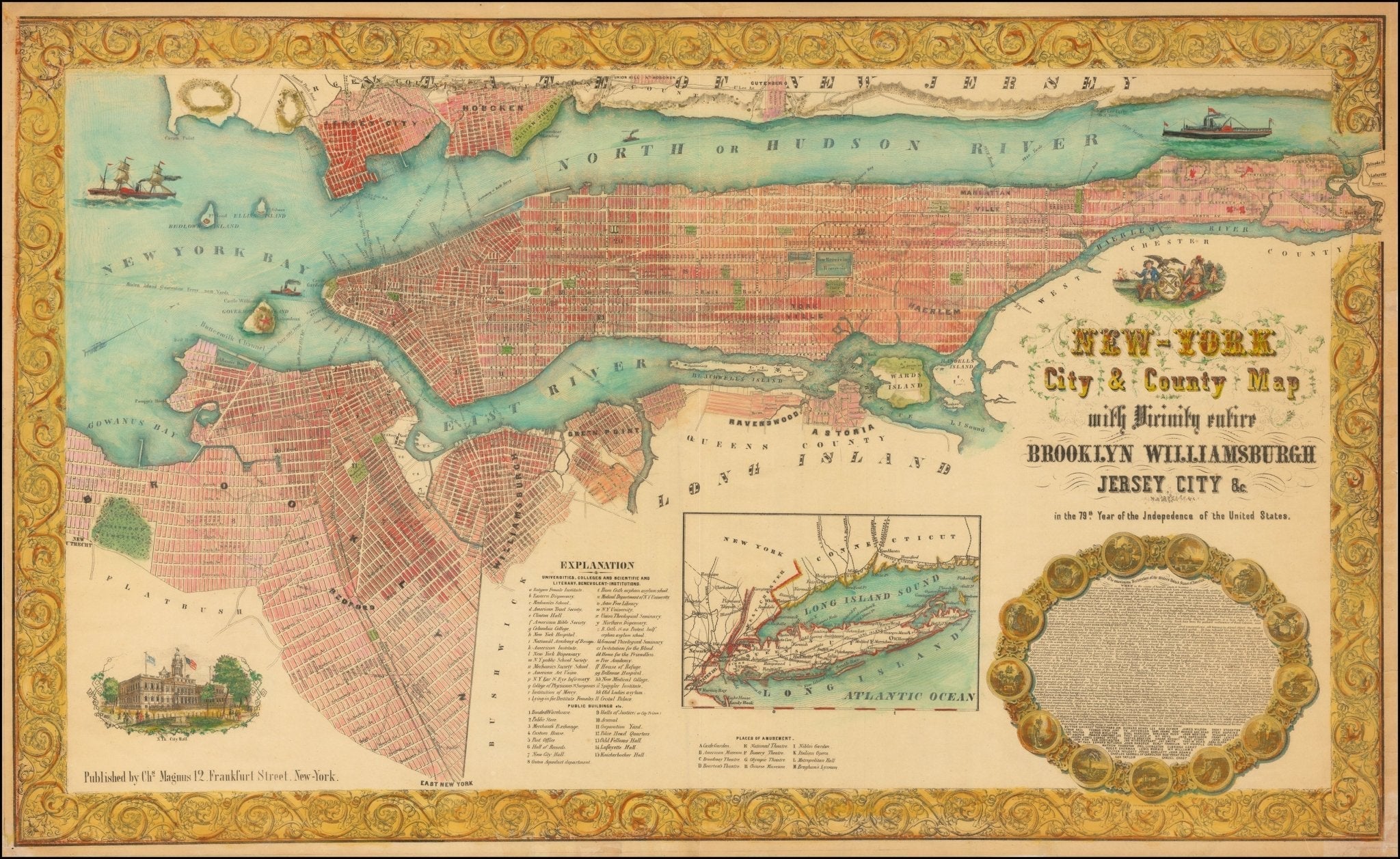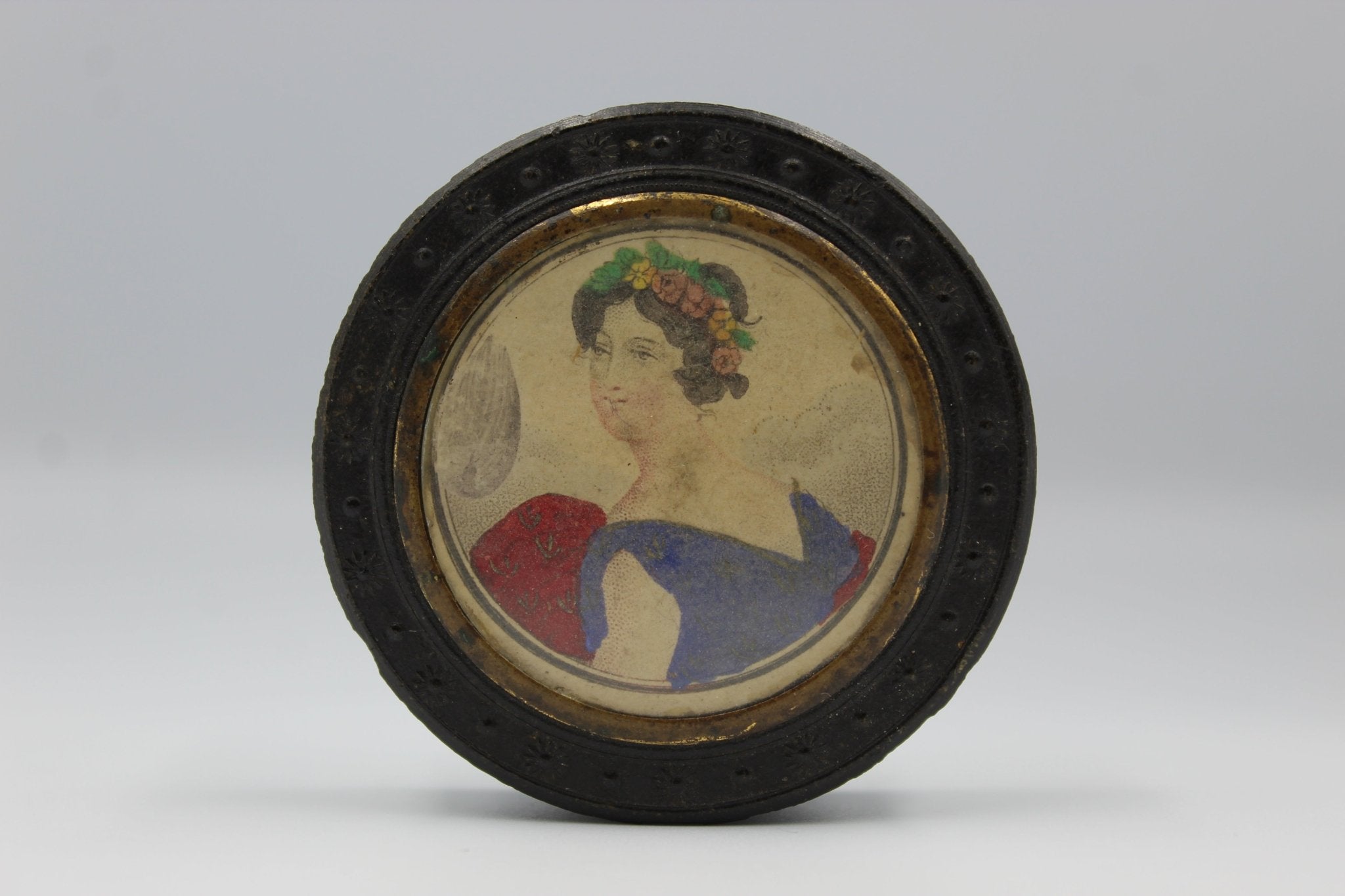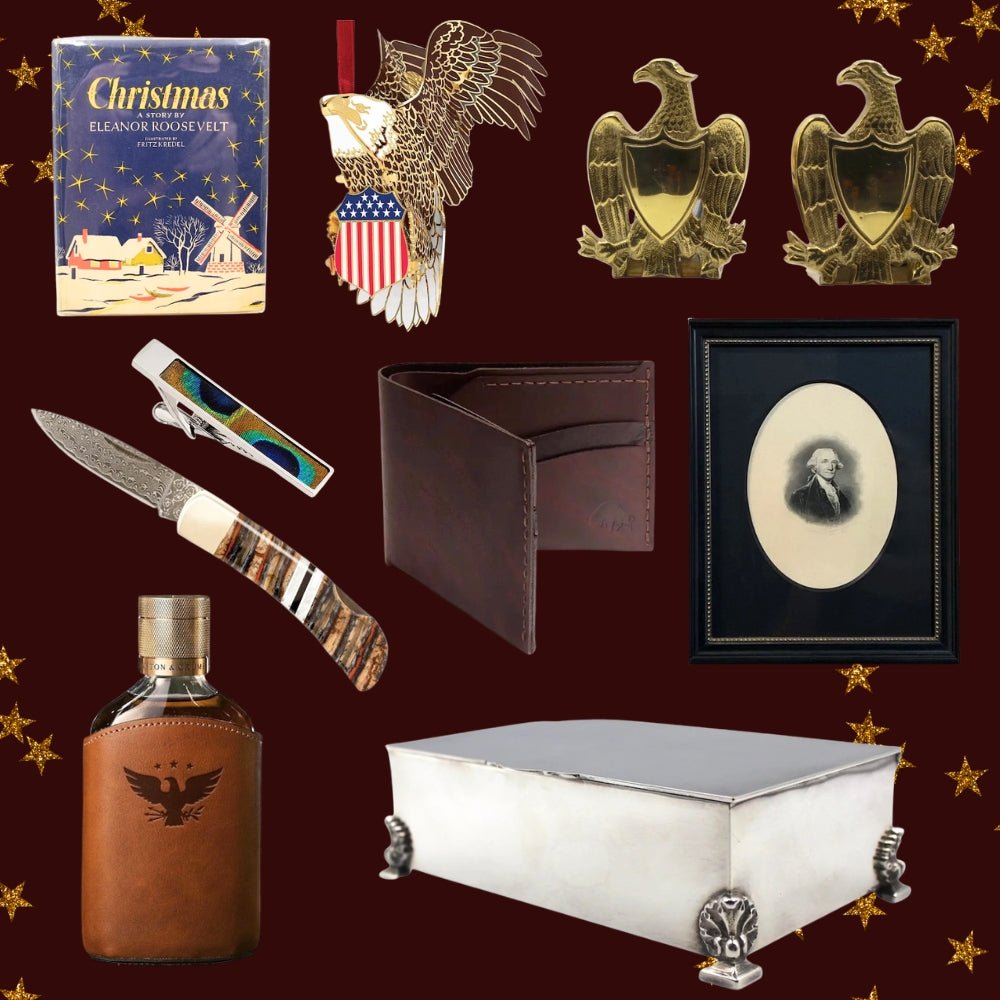Manufacturing the Stars and the Stripes
The original 13 stars and stripes of the American flag have taken on many different configurations over the last few centuries, with the construction techniques following suit. The earliest examples of American flags were created using natural fibers and dyes, both of which came from domestic and foreign sources. Many extant flags can be found using materials of wool, linen, cotton, and silk; each material with their own advantages and disadvantages.
-
The most extravagant examples of extant flags were created using silk, a material still deemed luxurious today. Many silk flags that we see today were created with the purpose of being exclusively ceremonial pieces, as the nature of silk prevents them from being flown daily. Silk was an expensive investment for wealthy families and government figures, and using this material for the American flag paid tribute to the honor the symbol deserves. The silk flags we currently have in the shop still maintain their beautiful sheen, with vibrant colors and printed patterns decorating them. However, the aging process of silk makes it more prone to condition issues. Over time, silk has the tendency to “shatter,” a process in which the chemical treatment of the fabric slowly damages the threads themselves. Thus, these silk ceremonial flags are exceedingly difficult to source in good condition due to their ephemeral nature.
Looking towards the iconic red and blue that makes up our flag, there were a few options in creating the colors of the stars and stripes. The advent of synthetic dyes occurred in 1856, but prior to the mid-19th-century, everything was sourced naturally.
Early Revolutionary America invested in indigo and an indigo related species as a cash crop, increasing the abundance of the blue dye within the colonies. By processing the indigo plant and the closely related woad plant, a vibrant blue was created. The red stripes in early American flags would most likely be created using dye made of cochineal bugs or madder root, producing a vibrant red. Cochineal dye was processed using parasitic bugs living on cacti plants, which were then collected and crushed into a pigment. Historically, this dye has been used by the Aztecs and Mayans since the second century BC. During the 17th-century, cochineal dye, also known as carmine, became an incredibly valued export of the Americas under Spanish colonization. Ironically enough, cochineal red was also used to create the iconic coloring of the British “Redcoats.” Despite both being sourced in the Americas, the availability of these luxurious fabric dyes was limited. Both the indigo and cochineal dyes have a complex chemical reaction with the materials they are dying, and therefore they can produce many variances in color through the years.
The dawn of the Industrial Revolution changed the manufacturing process of the American flag forever. The introduction of the treadle sewing machine came in 1845, with widespread household use occurring in the 1860s. Much larger family flags could be produced, as home seamstresses could create pieces in half the time. Wool and cotton flags are less difficult to acquire from the late 19th-century, as many homes would have a custom patriotic display of their own stars and stripes. A creative freedom was felt amongst these Americans, as there was no regulation on the configuration of the stars within the canton. In addition to the advancements in sewing, new synthetic dyes were being offered across the country. Naturally sourced dyes had the disadvantage of being less reliable, as many factors had to be taken into account while preparing the fabric and dye baths in order to produce a homogenous result. By the 1860s, aniline dyes in a wide variety of colors were commonly seen in Europe and America. Synthetic dyes produced a fabric that had better lightfastness, or color stability over time and sunlight exposure, which allowed for an extended lifespan of a hand-made flag. The difference in dyes and materials used over time may give an explanation for one of our most asked questions, “why is that flag that color?”

36-Star Flag circa 1865-1867
This flag is a great example of the concept of lightfastness, as the two dyed fabrics have faded at a contrasting rate. The canton of this 36-star flag has significantly faded from its original star-spangled blue, leading me to believe that it was originally dyed using a natural indigo or woad pigment. Today the canton appears as an almost-khaki color - starkly different from the vibrant red stripes next to it. Dating to around 1865-1867, this flag was created during the peak exhibition of synthetic aniline dyes. An array of colors were now available to home seamstresses, in both D-I-Y pigment dyes and pre-dyed fabric, at costs cheaper than the American-made natural dyes. In fact, the introduction of aniline and other synthetic dyes had nearly erased the production of naturally-sourced dyes and pigments within the Americas entirely. The creator of aniline dyes, William Perkins, would frequently proclaim the superiority of his new-fangled dyes over their natural counterparts, and this flag may contribute to this idea! Despite the availability of both blue and red synthetic-dyed fabrics, this flag appears to be colored with a mixture of both natural and aniline dyes. I can imagine the seamstress of the household splurging on a vibrant red dye to create this display of patriotism, using a natural dye or leftover fabric from an additional project for the other components.

Close-Up of 36-Star Flag, Cleveland featured right and Thurman opposite
Truly a masterpiece of the era, it's incredible to see the use of old and new techniques within this flag. In addition to the possible mixing of natural and synthetic dyes, this flag combines the techniques seen in machine and hand sewing. The unmistakable precision of a sewing machine is seen in the large seams holding the stripes together, with the canton attached using both hand and machine stitches. Presumably remaining in the same family for decades, this flag was repurposed for the presidential campaign of 1888. Using hand-applique techniques, the seamstress began to create the images of Grover Cleveland and his running mate amongst the canton. The only remnants today are the pen-marks outlining the portraits, as the campaign ended quickly and the seamstress most likely rescinded their support. We always love showing this “hidden secret” to those interested, so if you’re in the shop be sure to take a look!

Following the era of the Industrial Revolution, printed flags became the norm for everyday household use. From 1850 to 1959, the United States admitted an additional 19 states into the Union. As the official star count of the American flag would change nearly yearly, new production had to occur at the same rate. Invented in 1870, the process of clamp dyeing material allowed for a mass-production of flags printed along bolts of fabric. Prior to this new technique, mass-production of printed flags was in a limited and ephemeral quantity. The first to appear were 26-star flags dating to the mid 1830s-1840s, and extremely few extant pieces exist. With the ease of mass-production came a decrease in the quality of products, as they commonly used readily-available low-quality muslin. Thus, these early printed flags are deemed exceedingly difficult to find as they are not prone to leaving a long legacy. To read on about printed flags, visit this previous blog post.

Somewhat defying the general explanation listed above, our 31-Star flag circa 1850-1858 is printed upon silk. At this time silk was an extravagant commodity, so using it on such an ephemeral piece like a parade flag was a rarity. This flag would have most likely been produced to celebrate the admission of California as a state in the Union, either displayed in the home or proudly waved about at a celebratory event. Small imperfections from the printing process are seen throughout the stars and stripes, indicating the early techniques of mass-printing textiles. Remaining lustrous through the generations, the silk retains its original sheen today.
The beginning of the 20th-century saw the standardization of the American flag, with its canton forever cemented as it appeared in 1912. Due to the increasing tensions seen before the official start of World War I, the Taft Administration declared a standardization to aid recognition of fellow troops while in battle. Therefore, the unique canton patterns we saw throughout the 19th-century were no longer considered to be acceptable. Gone were the unique “Great Star”, medallion, and all other variations of the canton in favor of a unified front. The official flag now appeared as an orderly six rows of eight stars with all stars oriented pointing upwards, completed by specific proportions regulating the stars according to stripe width.
Although the American flag has largely remained unchanged throughout the last century, the flags that came before remain incredibly historically significant. Extant flags created prior to the Civil War remind us today of the craftsmanship, careful consideration, and patriotism that was found in Early Americans, lest we forget that spirit! Each unique example contains a story behind the creator, whether it is found in the materials used, canton pattern, or techniques utilized. Thus, we find it an incredible honor to be the temporary stewards of these patriotic pieces of history and we look forward to passing that honor to others!







